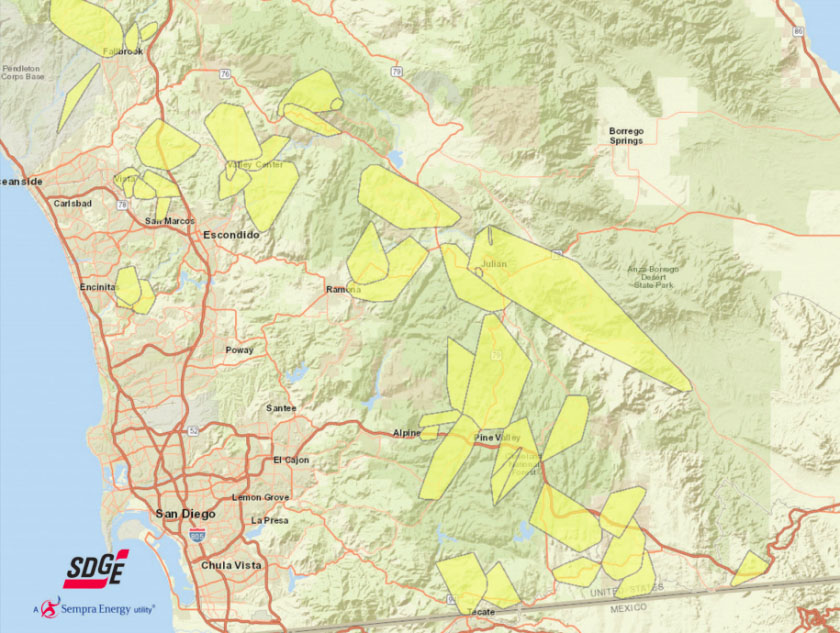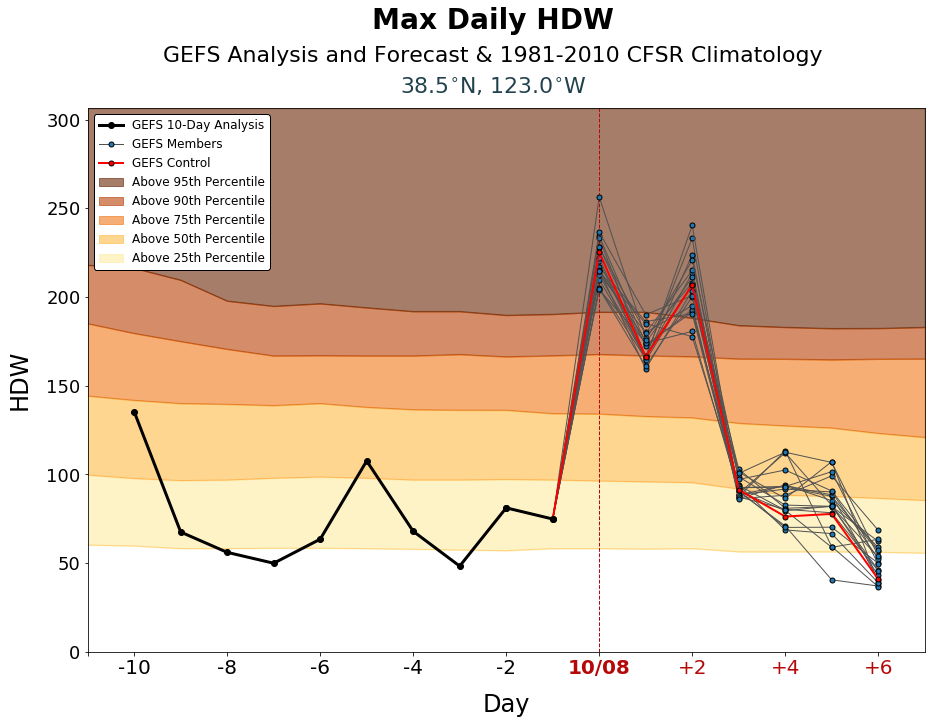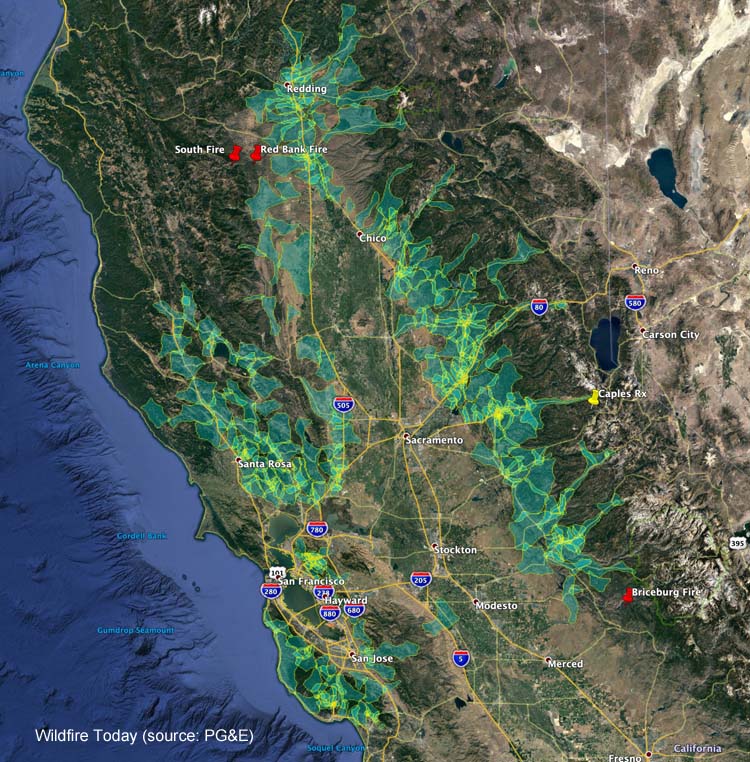The preemptive power shutoff for 800,000 addresses by Pacific Gas and Electric in Northern California is directly affecting approximately two to four million residents. The power company took this action to prevent their feeble power line system from starting fires during this period of strong winds. Farther south in California, San Diego Gas and Electric has warned residents living at 30,000 addresses that their power could also be turned off this week.
The indirect effects of having no electricity expand to a much larger population when you consider traffic lights not working, tunnels on highways being shut down, plus the closure of gas stations, schools, and businesses. At some point cellular telephone towers and infrastructure may exhaust their emergency power supply systems, not to mention the batteries in the public’s cell phones.
Firefighters’ communications could be hampered by the disabling of their radio repeaters on mountain tops. Notifying residents of approaching fires and conducting evacuations in order to save lives could be challenging.
All that is the assessment of someone hundreds of miles away. For the thoughts of a person much closer to what is actually happening on the ground, we turn to Rob Carlmark, a meteorologist for ABC10 in Sacramento, who is surrounded by areas affected by PG&E’s power shutoff. Here, with his permission, are samples of what he has been writing on his Twitter account, @rcarlmark:
10:25 a.m. October 9, 2019
So here is what’s happening on the ground in California for the fire weather story. It’s genuinely freaking everybody out. If we get ZERO fires out of this (small miracle) the power shut off will be remembered for a long time. #MorningBlend10
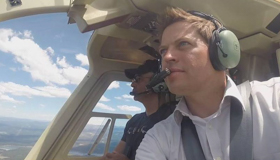
Despite the pretty large media effort by PG&E to warn people of the power outages…many people we are talking to at closed gas stations had no idea. Turns out not everyone…especially in rural areas look at the internet all day. Some of these folks were BLINDSIDED. We have to take them at their word because they are far away from the windiest areas affecting lines or COULD affect lines. Many work far away, and fuel up often. If you are at a gas station…let’s face it you NEED gas and maybe can’t drive 15-20 miles away to get it…or wait in long lines to get gas. They also have an unexpected day off work…maybe cancelled school..kid/kids to pick up and figure out what to do for DAYS with no power. Of course the alternative is having power on…and a well known source for fires active.
This is a tough spot to be in for 100,000s of customers which likely includes million+total in actual population if you extrapolate for households etc.
They are not going to reimburse people for spoiled food since it was planned. If an outage was caused by an extreme event and weather they might…case by case basis.
Also remember a lot of these people just got hit with a non-renewal for home insurance and if they found someone…it costs drastically more. Also remember that many of these people are actively trying to move…sell their home…can’t find insurance for new buyer or are dropping their prices all the time. This is the APEX of stress in some of the most beautiful places you ever could live.
We need to add more places… the Bay area is about to find out today if one of the major tunnels…MAJOR…will have to shut down for power outages at noon. Traffic there is a true daily horror show…and if you find this out…at work you are going to freak.
We haven’t even talked about Southern California…they too will experience massive outage issues potentially…STRONGER winds and LOWER humidity.
WE HAVEN’T EVEN HAD A FIRE YET! If that happens…which the odds are fairly high…it immediately turns into a dangerous life-threatening event with little info, or ways to get info (no power…no gas).
Finally…peak wind will be middle of the night [Wednesday night/early Thursday]. It’s not just about power…there are DOZENS of ways fires start and any fluke accident could set up many communities for a dangerous moment.
If we can get through this…the power might not come back on for a few DAYS in some areas after the fact (no strong winds) while they inspect lines. fire or not this story will continue for many days more.
4:19 a.m. PDT October 10:
Update from what’s going on in California with this fire weather/power outage emergency. We are right in the thick of it and it’s not over yet.
We had a VERY close call in a town called Moraga near the Bay Area overnight. Fire broke out near a nice suburb surrounded by open land…a true urban/wildland interface situation. It was dicey, scary and in the middle of the night…gusts were 35mph+ nearby and evacuations were door to door with no cell service and power shut off. By the hard work of firefighters and perhaps the advantage of having roads and access the fire is mostly contained and a nightmare scenario has been avoided…for now.
From what we can tell this is an area with a planned power outage and it’s a reminder that a fire can start form dozens of different ways…not just power arcs. We don’t know cause, but since the power was shut off there it’s worth exploring other causes
Supplies are running really low in power outage areas…water, flashlights, generators etc. have been in short supply like a true disaster emergency situation.
Easily the biggest complaint is “It’s not windy at my house…the power should be back on” Gusts near the dams/hydropower/transmission lines though are VERY strong up to 52 mph so upstream impacts are creating downstream confusion
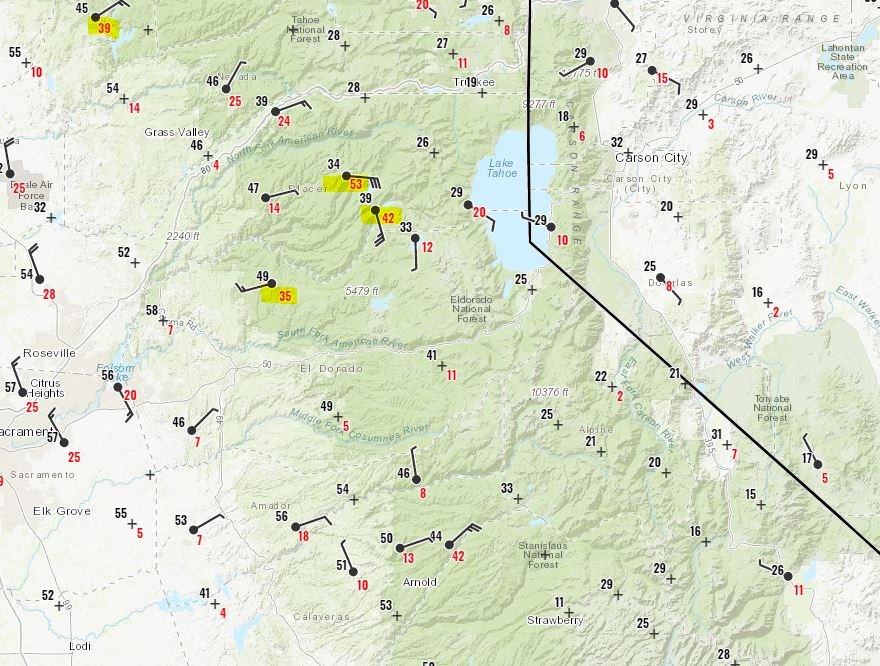
In short…it’s ongoing…people are on edge…every stoplight is a four way stop with traffic issues…people have NO idea when power is coming back…it’s a big deal that is getting bigger today.
I do see the weather changing tonight for many…less wind but still dry so there is an end to this in the weather world…but the power thing…it’s going to be some time.

